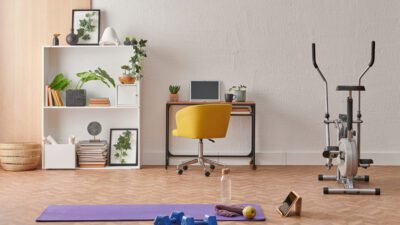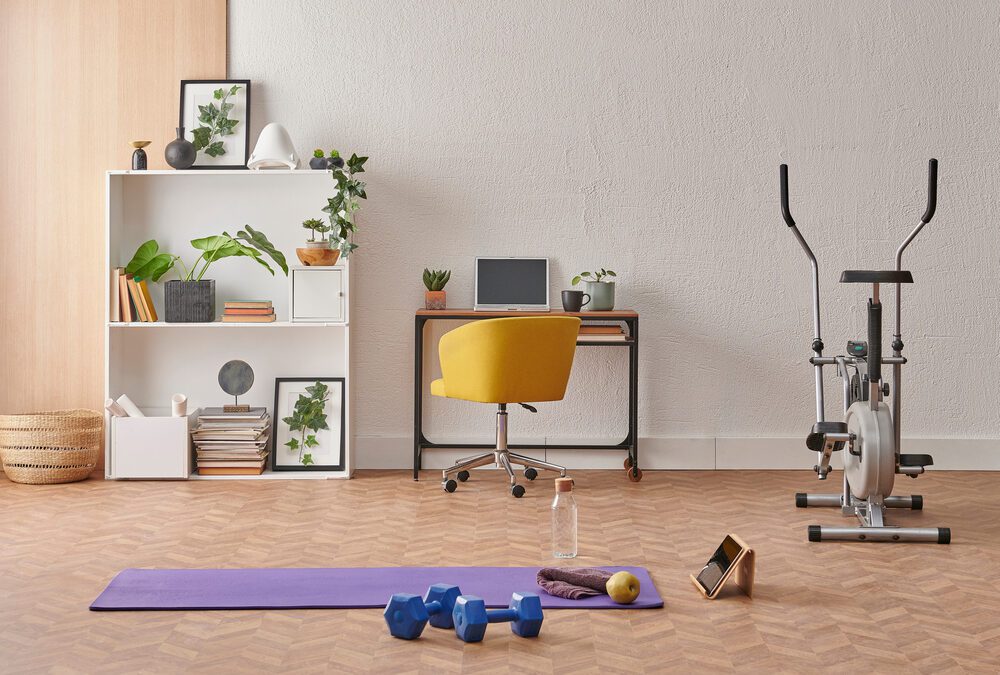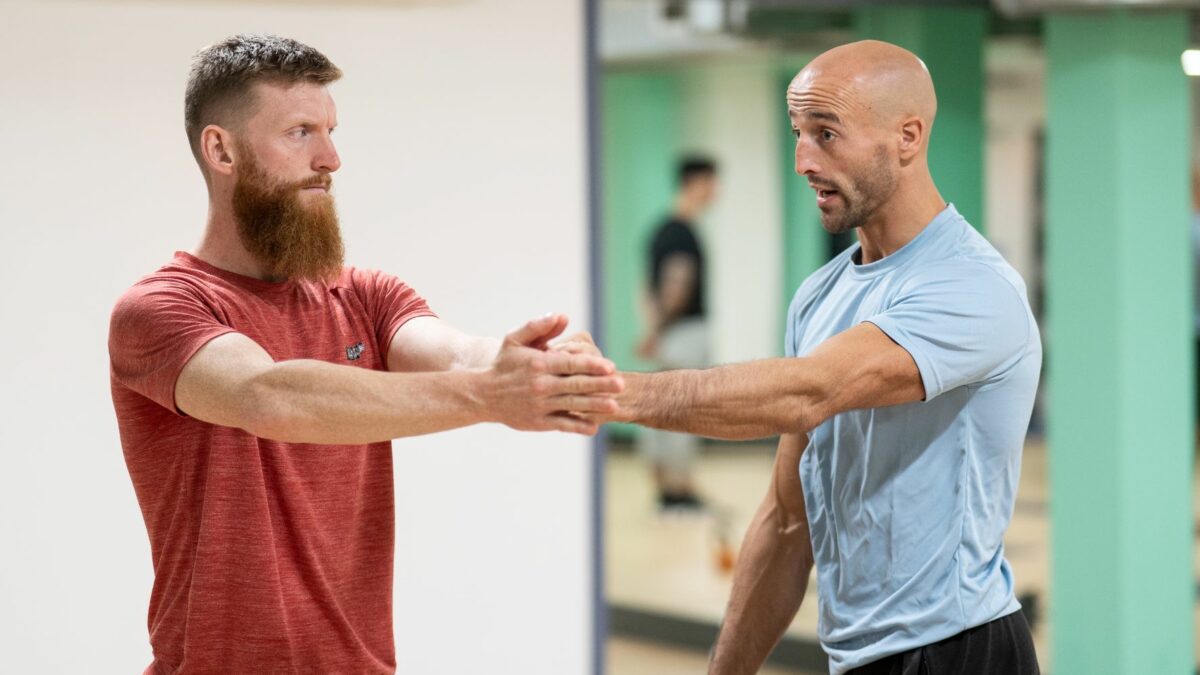



Many aspiring personal trainers dream of training in a huge gym with state-of-the-art equipment and all of the accessories and design elements that incite energy and motivation. But that’s exactly what it is, a dream.
In reality, personal trainers — especially self-employed ones — may need to train clients in small spaces, whether that be an extra room in their home, a garage, the basement, the attic, or a limited outdoor space.
A small workout area may not seem like it could be turned into a functional fitness environment. However, doing your own workouts, serving potential clients, and giving them a solid personal training experience in a small workout space is possible with the right design approach.
Get maximum functionality out of your small workout area and create an inspiring, safe environment for you and your future clients with these tips.
To really understand what you can do with your space, you need to evaluate it first. Empty it, declutter it, and clean the space. Then, you can get a good look at the layout and how much room you have to work with. This will help you develop a complete vision for your workout area.
For example, let’s say you want to turn your garage into a gym. Take measurements of your garage and decide whether you’ll use the entire space or part of it. From there, you would create a floor plan, detailing where equipment and accessories will go.
After that, you’d document what types of installation you’ll add to your garage, which heating and cooling units you’ll use, and lighting options. Decide on the exercise and other must-have equipment best for the space. Finally, you’d dig into storage solutions and ideas for personalizing the garage gym to inspire yourself and potential clients to work hard in each session.
Start with a thorough evaluation of the space to help you create a layout for a professional and motivating training environment.

One of the biggest concerns regarding small workout areas is how much and what kind of exercise equipment you can fit into it. At the end of the day, you’re there to train. And you must ensure you have all the machines and tools you need to train adequately.
Multi-functional equipment is perfect for small gyms. Versatile equipment allows you to perform multiple exercises on one machine.
Think of all-in-one workout stations with multiple attachments for various strength-training exercises, like pull ups, bicep curls, leg presses, calf raises, and so forth. There’s also multi-functional exercise equipment that uses modern technology.
For example, the mirror workout system can be mounted to the wall. When turned on, a personal trainer appears on the screen and guides you through whatever workout you choose. Depending on the brand, this system can come with attachments that make your workouts that much more productive.
Multi-functional equipment may cost more upfront. However, it can also be more cost-effective than having to buy each piece of equipment separately.
Consider your budget and the training needs of yourself and potential clients before deciding on any multi-functional exercise equipment.
Working out in a gym that’s way too hot or way too cold can lead to a negative training experience. Just like outdoor spaces, your workout area’s climate, whether temperature, humidity, or air quality, can impact health.
For instance, colder temperatures can impact blood pressure, narrowing arteries and forcing the heart to work harder to pump blood through the body. High temperatures and humidity can lead to increased headaches and migraines. And both freezing cold and high heat can trigger respiratory issues.
A small gym area can get hot or cold quickly, especially if you don’t have anything in place to manage the climate in the space.
So, make sure you have a suitable HVAC system and air conditioning unit in your gym so that you can exercise comfortably and maintain your health. You can also implement a smart thermostat to automate managing your small gym’s heating and cooling.
No matter how much equipment you have, you’ll need somewhere to store it. Leaving everything on the ground spread out will clutter the space and prevent it from being as safe and functional as possible. Instead, you need to look for smart storage solutions for small spaces.
For example, you could use wall-mounted racks for weights and hang mats from the ceiling on hooks. You could use shelves for gym accessories. You could store equipment in modular, flexible storage solutions. Multi-functional furniture, like benches with built-in storage, is also ideal for small gyms.
Creative storage solutions like these keep your small workout area organized and functional without taking up a lot of space.
The equipment, climate, and storage solutions you decide to put in your small gym space can make or break it. However, the aesthetics and atmosphere can too. Just like a big-name gym, a small workout area needs to be motivating.
As soon as you or future clients step into your gym, you want to be energized, positive, and ready to work hard. The colours, lighting, art, and accessories you incorporate into the space can induce these feelings.
Red is a stimulating colour that gets the heart pumping and yellow is associated with energy. A colour palette with these two colours would be a good choice for your gym. Brush up on colour psychology to see which colours evoke the emotions and behaviours you want from yourself and potential clients.
Then, put up artwork, motivational posters, wall decals, and ambient lighting to improve the look and feel of your space. Using mirrors is also a good idea, as this makes a small room look a lot bigger.
A small workout area shouldn’t stop any aspiring personal trainers from exercising and striving to give their potential clients the best possible training experience. Use the tips in this article to maximize functionality and elevate the atmosphere in your small gym area.